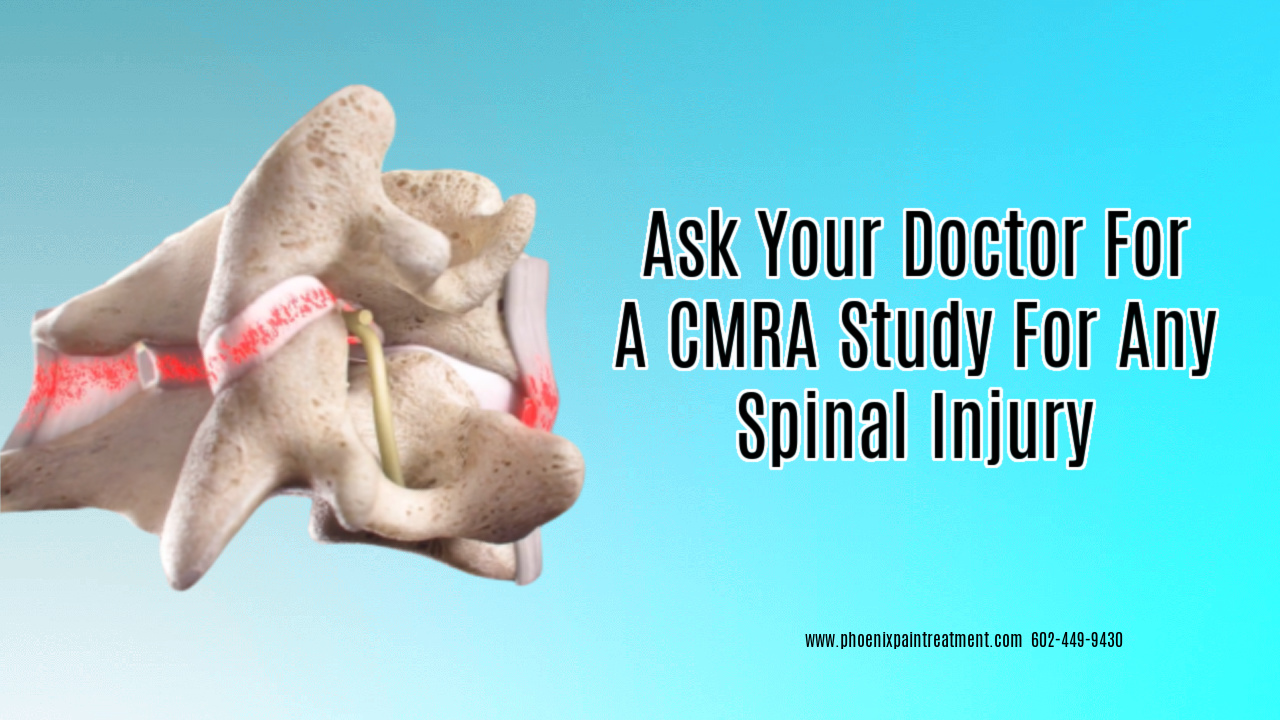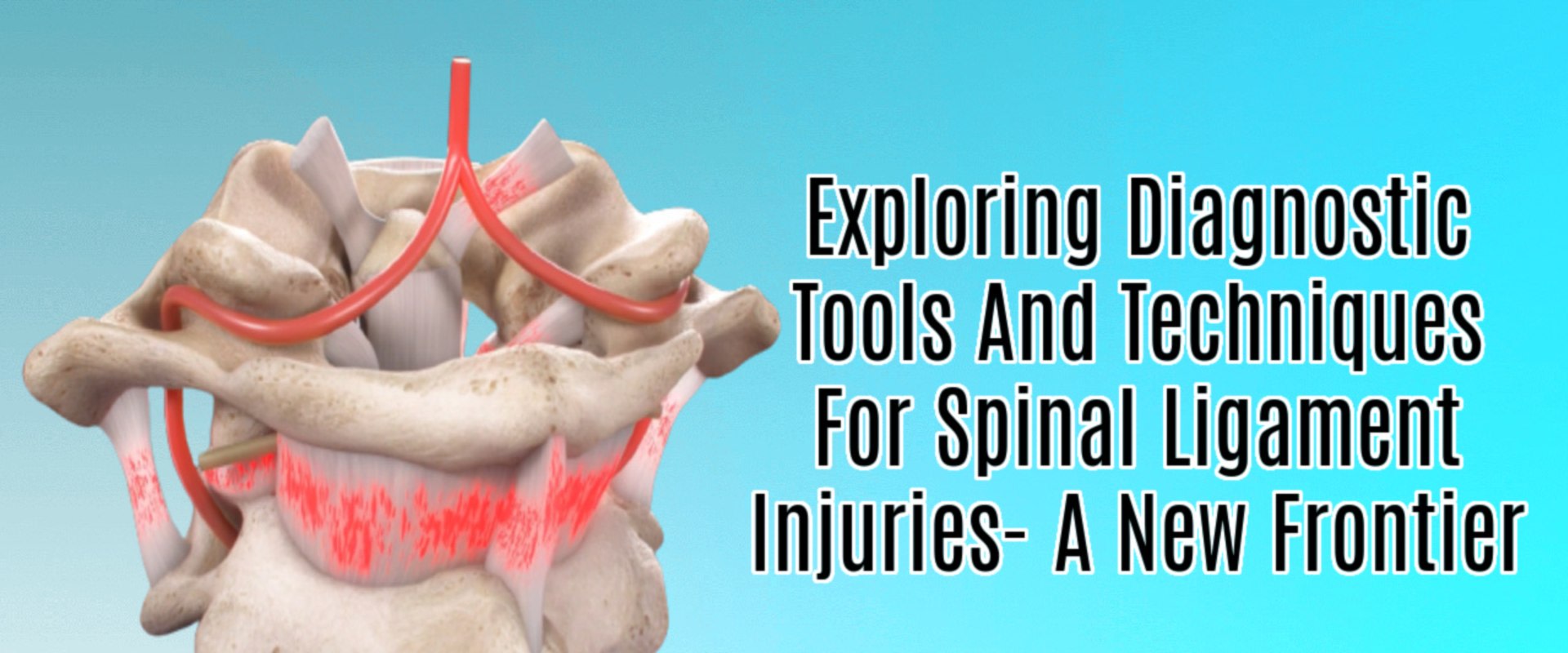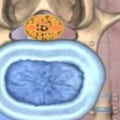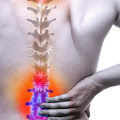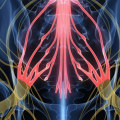Understanding The Impact Of Spinal Ligament Injuries On ActivitiesOf Daily Living
Spinal ligament injuries can have a profound impact on dailylife, causing significant pain and limitations in mobility. These injuriesoccur when the ligaments that support the spine are stretched, torn, or damageddue to trauma, such as a car accident, sports injury, or a sudden fall. Theseverity of the impact can vary depending on the location and extent of the damage.For most individuals, spinal ligament injuries can result in chronic pain,affecting their ability to perform daily activities, participate inrecreational and work-related tasks, and even engage in social interactions.
One of the critical challenges faced by individuals withspinal ligament injuries is the reduced range of motion and flexibility. Thedamaged ligaments can lead to instability in the spine, making it difficult tobend, twist, or perform specific movements without experiencing pain anddiscomfort. This can restrict their ability to engage in activities they onceenjoyed, such as playing sports, gardening, or even simple tasks like householdchores. Furthermore, the constant pain caused by spinal ligament injuries cantake a toll on one's mental well-being, leading to feelings of frustration,sadness, and even isolation. It is important to understand the impact of theseinjuries on daily life to effectively address the physical, psychological, andemotional challenges faced by individuals dealing with spinal ligamentinjuries.
Common Causes And Risk Factors For Spinal Ligament Injuries
Spinal ligament injuries can occur due to various causes andcan significantly impact an individual's daily life. One common cause istrauma, such as a car accident or a sports-related injury. These high-impactevents can stress the spine's ligaments, leading to strains, sprains, or eventears. Improper lifting techniques or sudden twisting motions can alsocontribute to ligament injuries. Additionally, repetitive movements or overuseof the spine can weaken the ligaments over time, increasing the risk of injury.
Several risk factors can make an individual more susceptibleto spinal ligament injuries. Age plays a crucial role, as older adults may haveweakened or degenerated ligaments that are more prone to injury. Poor postureor body mechanics can also increase the risk, placing excessive strain on theligaments. Certain medical conditions, such as osteoporosis or arthritis, canweaken the bones and ligaments, making them more susceptible to injury. It isimportant to be aware of these common causes and risk factors to take appropriatepreventive measures and maintain a healthy spine.
Identifying The Symptoms And Signs Of Spinal LigamentInjuries
Spinal ligament injuries can manifest in various ways, andit is crucial to identify the symptoms and signs to seek appropriate medicalattention. One of the most common indicators of a spinal ligament injury ispersistent pain in the affected area, which may range from mild to severe. Thispain can be localized or radiated to other body parts, causing discomfort andlimited mobility. In addition to pain, individuals may experience stiffness inthe spine, making it difficult to perform routine activities. This stiffnesscan be particularly noticeable in the morning or after long periods of inactivity.Furthermore, it is not uncommon for individuals with spinal ligament injuriesto feel a sense of instability or weakness in their spine, making them moreprone to falls or accidents.
Another potential sign of a spinal ligament injury is thepresence of swelling or bruising in the affected area. This swelling occurs dueto the body's natural response to injury, as the ligaments are damaged and thesurrounding tissues become inflamed. It is important to note that the swellingmay not always be immediately evident, especially if the injury is internal.Therefore, individuals should pay attention to any changes in their body'sappearance or sensations after experiencing trauma or recurring pain in thespine. Additionally, individuals with spinal ligament injuries may find itchallenging to maintain proper posture, as the damaged ligaments cannot providethe necessary support to keep the spine in alignment. This can lead to arounded or hunched back, which may exacerbate the pain and discomfortexperienced.
Exploring Diagnostic Tools And Techniques For SpinalLigament Injuries- A New Frontier
MRI and CT Scans Move Over There is A New Diagnostic SherifIn Town CRMA
Complex spinal ligament injuries with overlapping symptomsare hard to diagnose. Medical technology has brought many efficient diagnosticapproaches for these ailments. Spinal ligament injuries can be challenging todiagnose due to their complex nature and the overlapping symptoms they canpresent. However, advancements in medical technology have led to thedevelopment of various diagnostic tools and techniques that aid in accuratelyidentifying these injuries.
Until recently, the gold standard for diagnosing spinalligament injury was MRI and CT Scans. A preponderance of Medical Physicians stillopine that MRI and CT scans remain the Gold standard, but that is because thesetests are accepted as the "Gold Standard" by the medical field.
A vast majority of Chiropractic physicians prefer CRMA(Computerized Radiological Mensuration Analysis) over MRI and CT scans. That isnot to say that Chiropractors do not consider MRI and CT Scans important. Theyuse Computerized Radiological Mensuration Analysis because it gives a muchbetter clinical diagnostic picture of the damage associated with SpinalLigament Injury.
There are 220 ligaments in and around the spine; 23 arevertebral discs, and the remaining 197 are spinal support ligaments. It is nonsensicalto think that MRI and CT Scans can delineate specific damage to the spinalligaments as there is so much overlap between them, except for the Transverseligament, the Alar ligament, and the tectorial membrane. In addition, MRI andCT Scans can be "Blurred" by overlapping ligaments and other softtissues. Also, MRI does not take into account any of the anatomical real estateabove the C2 level.
CRMA Computerized Radiological Mensuration Analysis testing isolatesspinal ligament injuries by measuring excessive joint motion at its specificlocation. It also reveals spinal ligament injury severity in cervical andlumbar regions. These spinal conditions are not picked up by MRI and CT Scans. Thespinal support ligaments that align the human spine cannot be adequatelyvisualized using MRI or conventional X-rays. CRNA testing is FDA-approved and utilizes AMA disability Guidelines.
The quality of care delivered to the injured patient maysuffer due to insufficient documentation or inappropriate treatment methods.
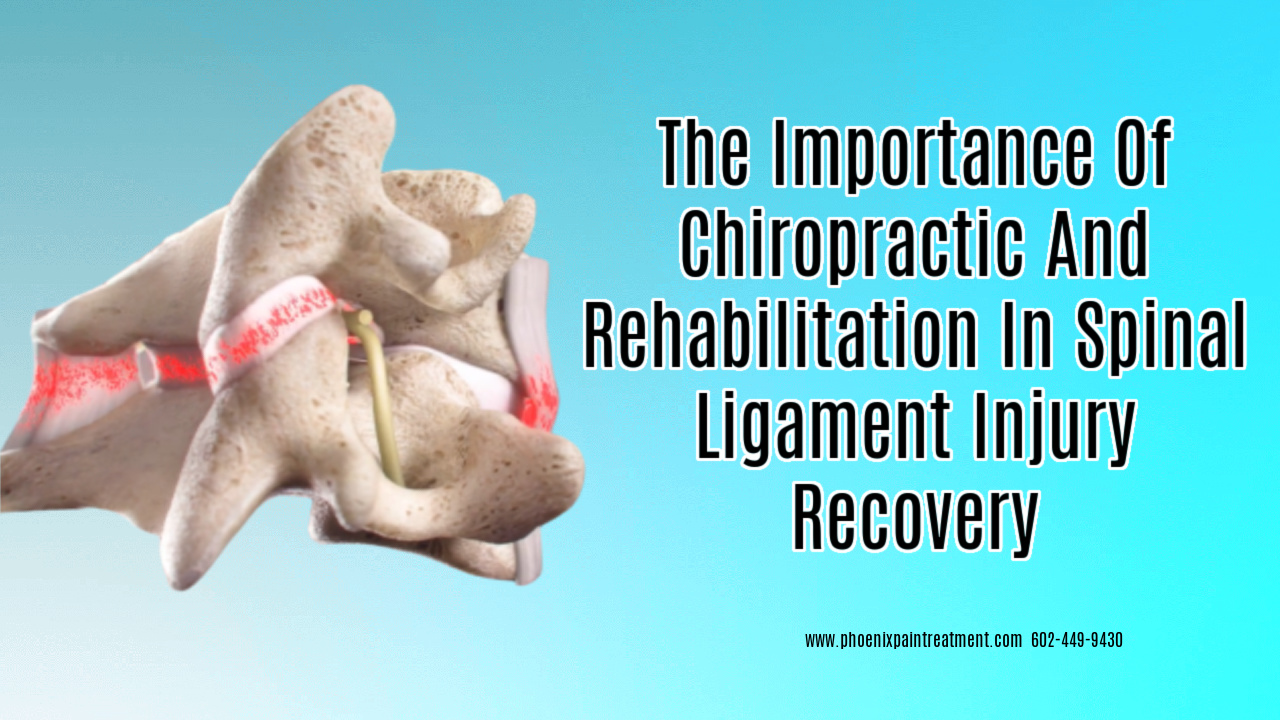
Treatment Options For Spinal Ligament Injuries: FromConservative To Surgical Approaches
Conservative treatment options for spinal ligament injuriesfocus on non-surgical approaches that aim to alleviate pain and promote healingwithout invasive procedures. One common traditional option is rest, whichallows the injured ligament to heal naturally. Patients may also be advised toimmobilize the affected area using braces or supports, which can help stabilizethe spine and prevent further damage. Additionally, Chiropractic Treatment andmanagement may be recommended to help improve the spine's strength,flexibility, and range of motion. This can include targeted exercises andstretches to promote healing and techniques such as ultrasound or electricalstimulation to alleviate pain and reduce inflammation.
In some cases, surgical approaches may be necessary whenconservative treatments fail to provide relief or if the ligament injury issevere. Surgery for spinal ligament injuries aims to repair or reconstruct thedamaged ligament and stabilize the spine. Common surgical procedures includeligament reconstruction, which involves using grafts to repair or replace thedamaged ligament, and spinal fusion, where two or more vertebrae arepermanently joined together to create stability. Surgical approaches aretypically considered when there is significant instability in the spine,ongoing pain, or neurological symptoms such as weakness or numbness. However,it is essential to note that surgery is not always the first or only option andshould be carefully considered in consultation with a healthcare professional.
The Importance Of Rehabilitation And Chiropractic In SpinalLigament Injury Recovery
Chiropractic care plays a crucial role in managing spinalligament injuries. With its emphasis on the musculoskeletal system,chiropractic treatment focuses on restoring proper alignment and function tothe spine. This conservative approach offers a non-invasive and drug-freealternative to traditional medical interventions.
One of the key benefits of chiropractic care for spinalligament injuries is the ability to address the root cause of the problem.Chiropractors have extensive knowledge of the spine and its supportingligaments, allowing them to identify misalignments and imbalances that may becontributing to the injury. Chiropractors work to restore proper alignment,reduce inflammation, and promote healing through spinal adjustments, softtissue therapy, and rehabilitative exercises. By addressing the underlyingissues, chiropractic care provides symptom relief and helps prevent futurerecurrences of spinal ligament injuries.
Benefits Of Chiropractic Treatment For Spinal LigamentInjury
Chiropractic treatment offers several benefits forindividuals suffering from spinal ligament injury. One of the primaryadvantages is pain relief. Chiropractors use various techniques, such as spinaladjustments and manipulations, to alleviate pain and discomfort caused byspinal ligament damage. By realigning the spine and reducing the pressure onthe injured ligaments, chiropractic care can help reduce inflammation andpromote healing. This targeted approach to pain management can be particularlybeneficial for individuals who prefer natural alternatives to medication orsurgery.
In addition to pain relief, chiropractic treatment also improvesmobility and function. Chiropractors understand the intricate relationshipbetween the spine and the nervous system, and they work to ensure that theinjured ligaments do not impinge on nerve pathways. Through gentle adjustmentsand therapeutic exercises, chiropractors help restore proper movement andfunctionality to the spine. This can lead to increased flexibility, reducedmuscle tension, and improved overall quality of life for individuals recoveringfrom spinal ligament injury. Furthermore, chiropractic care often includescomprehensive rehabilitation plans to strengthen the supporting muscles andprevent future injuries.
Chiropractic Techniques Used In Managing Spinal LigamentInjury
Chiropractic techniques play a crucial role in managingspinal ligament injuries. These techniques aim to address the underlying issuescontributing to the injury, such as misalignments and imbalances in the spine.One commonly used technique is spinal manipulation, also known as chiropracticadjustment. This technique involves applying controlled force to specific spineareas to restore proper alignment and mobility. Doing so helps alleviate pain,reduce inflammation, and promote healing in the affected ligaments.
In addition to spinal manipulation, chiropractors mayincorporate other techniques to manage spinal ligament injuries. Soft tissuetherapies, such as massage and myofascial release, address tightness andtension in the surrounding muscles. These therapies provide relief, improveblood circulation, and promote healing. Moreover, chiropractors may recommendtherapeutic exercises and stretches to strengthen the muscles supporting thespine and enhance flexibility. By incorporating these techniques into acomprehensive treatment plan, chiropractors aim to restore the function of thespinal ligaments and promote long-term healing and recovery.
Preventing Spinal Ligament Injuries: Tips For Maintaining AHealthy Spine
Proper maintenance of a healthy spine is crucial forpreventing spinal ligament injuries. One key aspect of maintaining a healthyspine is practicing good posture. Whether you're sitting at a desk or standingfor long periods, it's essential to maintain a neutral spine position. Avoidslouching or hunching your shoulders, as this can strain your ligamentsunnecessarily and lead to injuries. Additionally, incorporating regularexercise into your routine can help strengthen the muscles that support yourspine. Activities like walking, swimming, or yoga can contribute to overallspinal health and reduce the risk of ligament injuries.
Another critical aspect of preventing spinal ligamentinjuries is being mindful of proper body mechanics. Whether lifting heavyobjects or carrying out repetitive tasks, it's essential to use propertechnique and avoid movements that strain your spine excessively. When lifting,remember to bend at your knees and use your leg muscles instead of relyingsolely on your back. Avoiding sudden twisting or jerking motions is alsoadvisable, as these can increase the risk of ligament injuries. Incorporatingthese simple tips into your daily routine can significantly reduce the chancesof experiencing spinal ligament injuries and maintain a healthy spine.
Managing Chronic Pain Associated With Spinal LigamentInjuries
Spinal ligament injuries can often result in chronic pain,which can have a significant impact on a person's daily life. Managing thispain is crucial for improving quality of life and promoting overall well-being.There are several strategies and treatment options available to helpindividuals cope with and alleviate the chronic pain associated with spinalligament injuries.
Chiropractic Treatment and management typically isbeneficial in reducing pain and improving mobility in individuals with spinalligament injuries. These approaches focus on holistic healing and address theunderlying causes of pain, offering a more comprehensive approach to painmanagement. Additionally, complementary and alternative therapies, such asacupuncture and sometimes Physical Therapy, can be helpful.
Nonsteroidal anti-inflammatory drugs (NSAIDs) are all too oftenprescribed to reduce inflammation and alleviate pain. These medications canprovide temporary relief and help individuals function more comfortably. Insome cases, stronger pain medications, such as opioids, may be recommended forsevere pain. However, it is vital to approach medication management under theguidance of a healthcare professional to minimize the risk of dependence oradverse effects. This is precisely why Chiropractic Management is the bestchoice for managing spinal ligament injury.
Psychological And Emotional Impact Of Spinal LigamentInjuries: Coping Strategies And Support
Psychological and emotional impact can be a significantaspect of spinal ligament injuries, often affecting the overall well-being andquality of life of individuals. Dealing with the physical pain and limitationsimposed by the damage can take a toll on a person's mental health, leading tofeelings of frustration, helplessness, and even depression. The effects can belong-lasting, as individuals may face challenges in performing daily activitiesthey once enjoyed, leading to a loss of independence and a sense of identity.
To cope with the psychological and emotional impact ofspinal ligament injuries, it is essential to focus on building a supportsystem. Surrounding oneself with family, friends, and healthcare professionalswho understand and empathize with the challenges can provide a sense ofvalidation and guidance. Additionally, seeking professional help from atherapist or counselor can assist in developing coping strategies andprocessing emotions. It is crucial to recognize that healing is physical andmental, and seeking support plays a vital role in the overall recovery process.
Promoting Awareness And Advocacy For Individuals With SpinalLigament Injuries
Spinal ligament injuries can have a significant impact on anindividual's daily life, often resulting in chronic pain and limited mobility.Promoting awareness and advocacy for individuals with spinal ligament injuriesis crucial to ensure they receive the support and resources necessary for theirrecovery and overall well-being. By raising awareness about the challengesfaced by those with spinal ligament injuries, we can work towards breaking downstigmas and misconceptions while promoting a more inclusive and understandingsociety.
Advocacy plays a vital role in empowering individuals withspinal ligament injuries to navigate the healthcare system and accessappropriate treatments and services. By advocating for improved access torehabilitation programs, specialized care, and adaptive equipment, we can helpindividuals with spinal ligament injuries regain independence and enhance theirquality of life. Additionally, promoting awareness of the psychological andemotional impact of these injuries is essential in supporting individuals throughtheir healing journey and providing the necessary resources for mental healthsupport. Together, we can foster a community that understands the challengesfaced by those with spinal ligament injuries and actively works towardspromoting their well-being and inclusion in all aspects of life.
